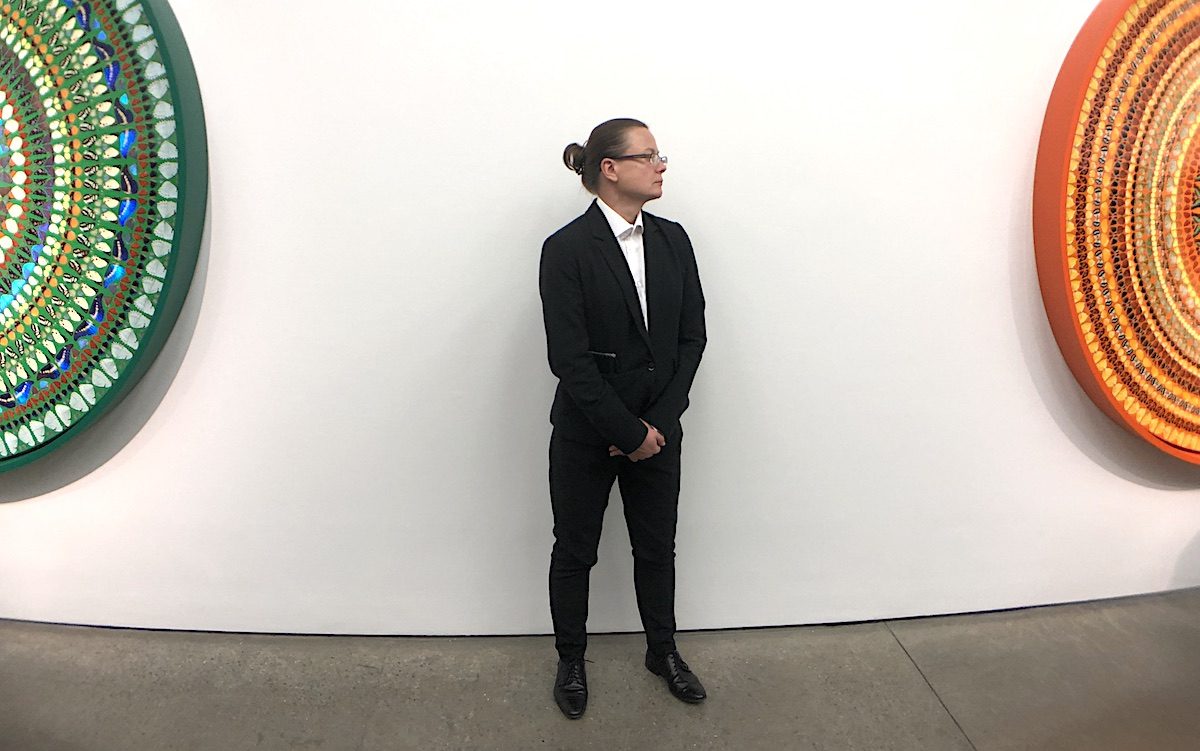Damien Hirst’s show Mandalas, at White Cube Mason’s Yard, has already attracted indignant commentary in The Times. Rachel Campbell-Johnson’s review, which covered the best part of two facing pages, carried the indignant headline: “I, for one, would be ashamed to own one.” While admitting that “the eye is enchanted”, she hated the fact that “these designs are built up from hundreds and thousands of torn-off butterfly wings stuck to backgrounds of household gloss.”
Hirst’s show offers a holocaust of butterflies, creatures who must have been specially bred for the purpose – ELS
There are several issues here. One is the increasing collective squeamishness, at least among the kind of people who go to exhibitions of contemporary art, about anything that takes or threatens the lives of the living creatures that surround us. Fur coats made of real fur are out. Vegans refuse to eat steak, or even for that matter a helping of fish and chips. To destroy a multitude of beautiful small, winged creatures in the name of making art seems like an obscenity.

There is, I think, no doubt that Hirst’s Mandalas are both intended to seduce your eyes, and at the same time to make you squirm.
These works derive from a kind of hobbyism that was popular in the 19th century, when people, certainly in Europe, were much less sensitive about objects of this sort. Victorian fire-screens made with dead butterflies can still occasionally be found in provincial antique shops, More often than not, in faded, dilapidated condition.
Hirst’s show offers a holocaust of butterflies, creatures who must have been specially bred for the purpose. It’s not as if the artist grabbed a butterfly net on a fine summer day, went out into some neighbouring fields, and captured a few fluttering creatures as sacrifices for his art. There are so many of them here, represented by their surviving wings that they must have been bred in quantity for the purpose, killed as soon as the emerged from the chrysalises in order to preserve those wings in immaculate condition. The circular patterns the artist creates with this material have a strong optical dynamism. Sometimes they seem flat, sometimes they swarm outward towards you, from the surfaces where they have been attached. The exhibition handout suggests that they have been inspired by the religious images that represent the cosmos in certain kinds of Far Eastern art “Hindu, Buddhist, Jain or Shinto”.
The handout also offers another reference: “Associated with the soul in classical culture, the butterfly, while visually seductive, always carries the inference of death.”
Which brings one back to a theme that has been constant in much of Hirst’s work, whatever physical form it happens to take. These massacred butterflies are the close cousins of his now long-ago dead shark, floating eerily in its glass tank.
Is he entitled to sacrifice so many fragile beautiful creatures to ram home this lesson? That’s for you, and not me, to say. What I can say is that this is Hirst’s most striking series for quite a long time. If you find it uncomfortable to contemplate, that may indeed be part of its intention.
Words: Edward Lucie-Smith Photos: P C Robinson © Artlyst 2019
Damien Hirst- Mandalas – 20 September 2019 – 2 November 2019 – White Cube Mason’s Yard

